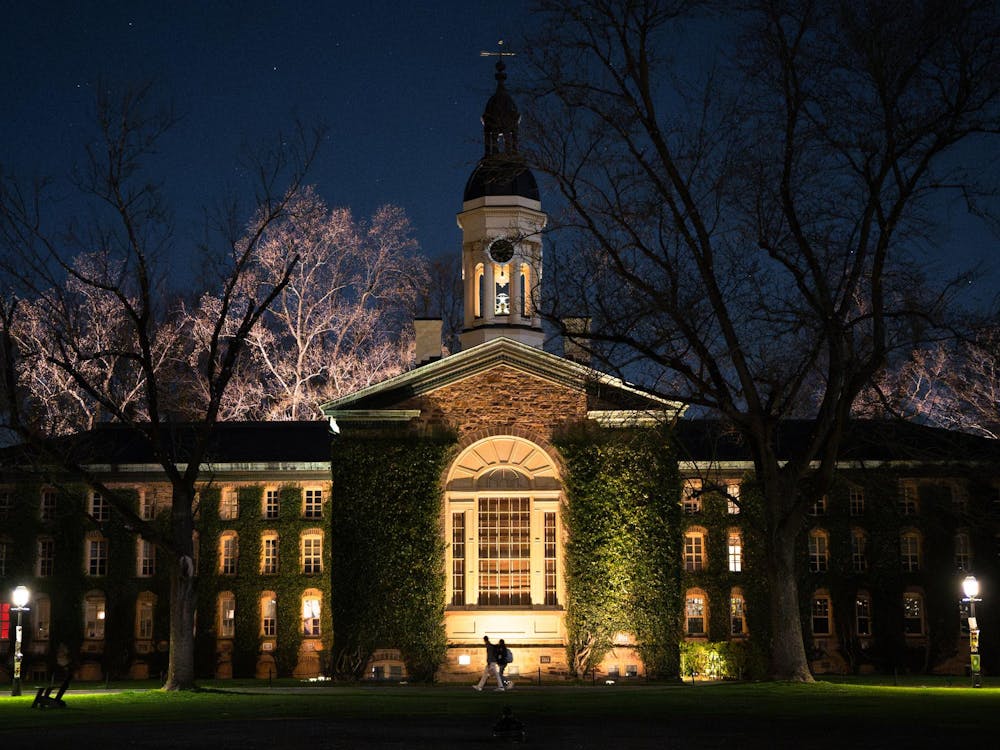Misguided efforts to curb perceived "grade inflation" could do great harm to Princeton's students. It is unclear whether grade inflation really exists. There is good reason to doubt the severity of whatever inflation may have taken place. Relativistic theories of grading have pushed the grading debate in the wrong direction. Any serious tightening of Princeton's grading threatens to misrepresent the caliber of our diverse student body, peg students with unrealistically low grades and diminish students' investment in and benefit from the many non-academic aspects of a Princeton education. It also impairs their competitiveness against other graduates in the job market and the pursuit of further study.
The best response to the claims of the grade-inflation hawks is that grades are not inflated. Grades have risen because Princeton students are better than they used to be. This is not arrogance, but statistics. While grades have risen over the past few decades, GPAs weren't the only things changing at Princeton and at other universities. Higher education has become an increasingly common destination for more and more people. Once universities began admitting women and students from diverse racial, ethnic, geographic and socioeconomic backgrounds, the caliber of an average student at a first-class institution could rise, simply because there were more students for admissions committees to choose from.
In but one example, the U.S. National Center for Education Statistics reports that just 5.8 percent of women completed four-year colleges in 1960. In 1999, 23.1 percent did so. In short, there are more As awarded today than 20 years ago because among the greatly increased numbers of college students there are more students capable of earning them. To insist that grades are too high risks rejecting the benefits of the diversity to which our universities properly commit themselves.
Grade hawks subscribe to a relativist theory of grading. In a class of 10, the argument runs, there should be maybe one A or A-, two or three Bs, four or so Cs, a D and perhaps an F. In such a system, an A grade denotes the best student in the group, relative to his peers. Hence many professors only give one A or give As to the top five students. This kind of grading is flawed because it punishes students for being part of an engaging and stimulating group. Sparing the high grades might exaggerate merely marginal differences between students.
More objective grading assesses the extent to which students have met a given set of standards for success in a course. Thus, an A in a history course, for example, would signify a greater degree of familiarity with events and historical trends than a B, with Cs and Ds lower down on the scale. Under objective rather than relative grading, any range of grades is possible, but each student's grade is independent from that of his or her peers. Objective grading also acknowledges the possibility that many students in a course have earned an A. Such results are quite possible at an institution like Princeton, particularly in light of the increasingly diverse and capable student body. Anti-grade inflation crusades risk an increase in relativistic grading, which, instead of making grades somehow "too high," often push them too low. We might label this phenomenon "grade deflation."
Faculty and administrators understandably care about accurate grading. Yet there may be legitimate, non-inflationary, reasons for rising grades. However, Princeton also skews grades in another direction. Under any grading system — objective or relativistic — A+s reflect excellence. They are rare grades awarded to top students that are even more prized than As. Academic regulations collapse A+s into As, awarding both a 4.0 in GPA calculations. Previously, Princeton gave A+s a higher value of 4.33. Moving away from the 4.33 A+ inaccurately diminished the special distinction of an A+ and is as much a distortion as giving a B+ to C-quality work.
Restrictive grading practices would also dampen cultural life and extracurricular activity. Students allocate a limited amount of time to their work, and those with significant extracurricular commitments are hard pressed. If deflationary grading practices compounded Princeton's already rigorous academic program, students' choices would shift accordingly. Dancers, debaters, athletes and even Daily Princetonian columnists would spend more time competing for reduced chances to escape unrealistically deflated grades. They would have less time to invest in their performances, practices and publications. A misguided policy on grade inflation might be particularly destructive in this respect, since so many enriching and educational experiences take place outside of the classroom.
Grade inflation may indeed be a problem, but probably not nearly as serious as the grade hawks would have one think. An emphasis on lowering grades is likely to lead to increasingly relativistic grading practices and unrealistically low grades. Simply put, Princetonians may really be that good. The grade hawks must temper their misplaced zeal. Carlos Ramos-Mrosovsky is from New York, NY. He can be reached at cr@princeton.edu.







